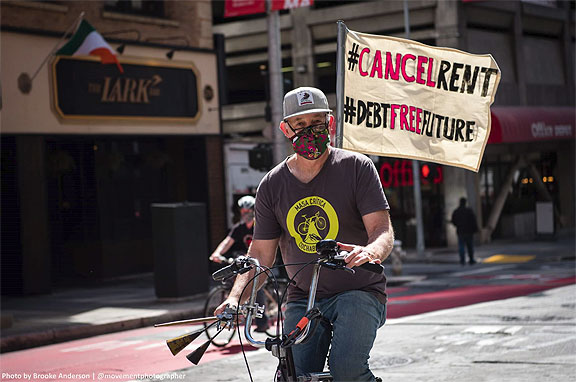
While I may be sick of wall-to-wall coronavirus in the media, and we’re all a bit stir-crazy with the physical distancing and staying home, I’m NOT sick of this luminous, sensuous, expansive, amazing HALT that we’re living through now. I’m cautiously excited about the profound crisis of legitimacy this pandemic is inducing in our already brittle, exhausted, and criminally insane society. After weeks of imagining how different life can be, and seeing the amazing resurgence of turtles on a beach on the east coast of India, crocodiles on the beaches of Oaxaca, Mexico, and countless other regenerations and reappearances, and sharing the clean air and sparkling views we now have every day, who hasn’t stopped to ponder the possibilities of NOT going back to “normal”? I’ve argued for decades that life could be SO wonderful, SO much better than the pathetic charade we have been imprisoned in until now. But we had to stop working, stop producing that world, and after a healthy break to think about it, start producing the world we want to live in. Maybe the sudden devaluation of shopping, celebrity, and spectacle has enriched our lives and opened our senses to overlooked possibilities? Did we inadvertently stop and smell the roses?
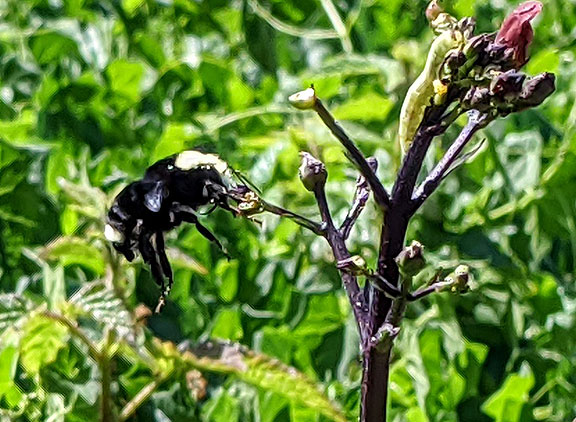
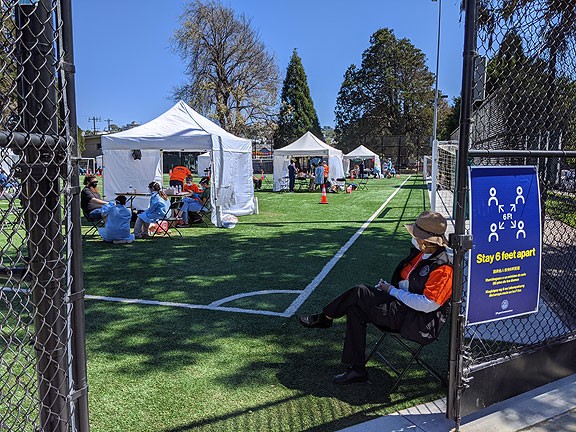
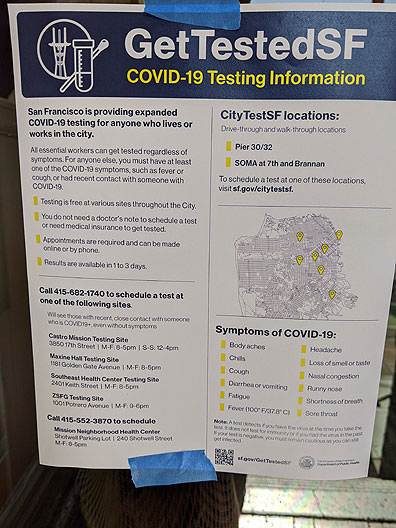
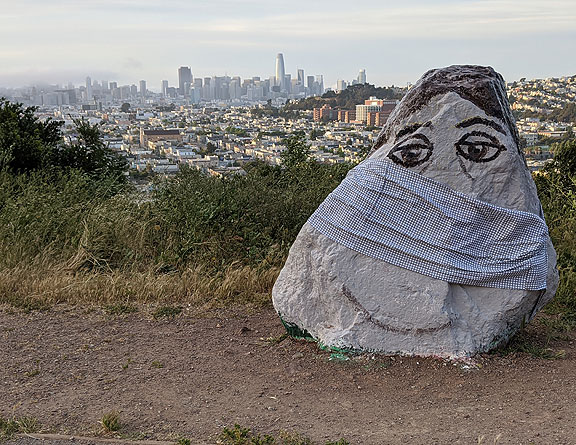
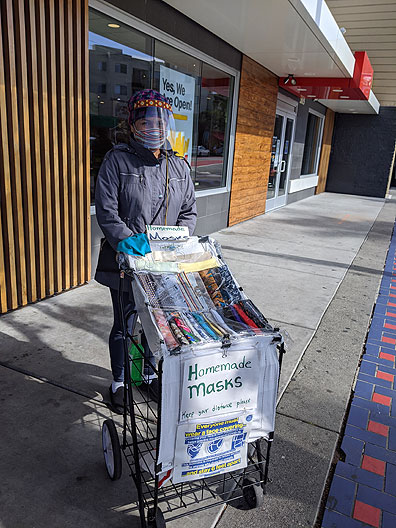
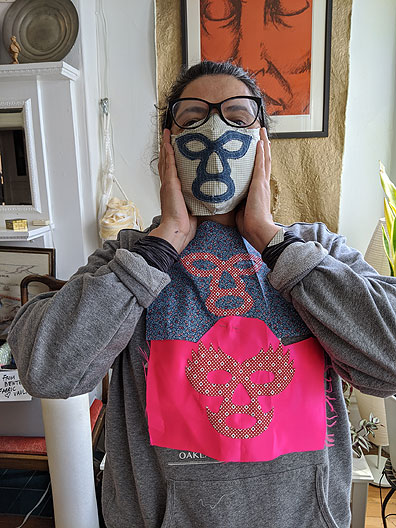
My mind wanders these days, even as I try to focus on one theme or another. Public health, pandemic disease, bird flu, ornithology, speculative fabulism and science facts, medicine and authority, and on and on. I’ve been reading a lot about public health, and even dived (dove?) into the history of epidemic disease here in San Francisco thanks to City of Plagues by Susan Craddock. In it, she shows how poor people were harshly pathologized in 19th century San Francisco, getting blamed for getting sick (since their poverty was a result of their poor character, not an unequal social division of wealth). San Francisco’s white workers directed their frustration and racist wrath at the Chinese almost from the beginnings of statehood, and recurring smallpox, tuberculosis, syphilis, diphtheria, and other disease outbreaks were repeatedly blamed on Chinese. Public health officials took advantage of this prevailing logic to invade Chinatown on missions to “clean it up,” leading most dramatically between March and October 1903 to the destruction of 160 buildings and the eviction of 70 more in the small neighborhood during a bubonic plague eruption. No studies were ever done on the health effects of repeated use of chlorinated lime, carbolic acid, bichloride of mercury, and other noxious substances during these “clean-up” campaigns. After the 1906 earthquake, the devastated city was overrun by hundreds of thousands of rats, and it was finally understood that fleas on rats were the source of bubonic plague. Chinatown, was one of only three districts that did not have a plague problem since the neighborhood had already been rebuilt and sanitized. The rest of the City went on a rat-killing frenzy, and also began pouring cement where wooden floorboards had been in basements and back yards. Dr. Rupert Blue, the city’s Health Commissioner, said, “The disease [was being] built out of existence. This is the hope of San Francisco and in time that city will be one block of concrete throughout.” It was this same post-quake campaign that led to the removal of chicken coops, horse stables, and all domestic livestock from San Francisco. A decade later, the 1918 flu ripped through San Francisco twice, even inspiring a public revolt against wearing masks, before being largely forgotten until Covid-19 refreshed our memories.
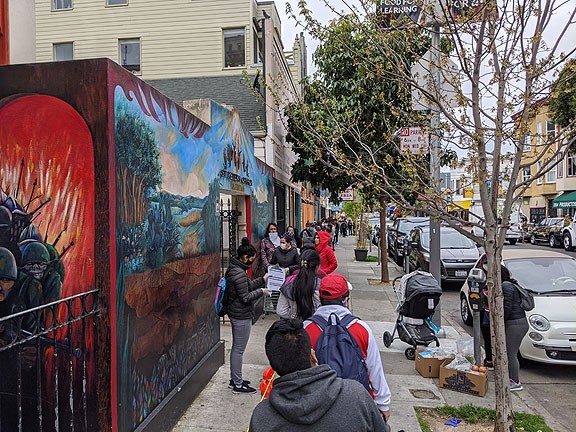
The bizarre reality we are living through, when history has suddenly jumped up and seized us all by the throats (or lungs for the unlucky ones already sick), has led to a rapid reconsideration of what is important. For most people, family and friends and the vital connections we have with the people we care about, has moved front and center. Considering what we really need has been an unexpected bonus to this enforced staying-home. Seems toilet paper is very high on the list for a lot of folks, but more broadly, access to food, electricity, and communications has taken on central importance. Care provision, whether by front-line medical workers, or the legions of low-wage workers who had been toiling unappreciated in skilled nursing facilities or childcare centers, also looms large as a basic necessity, elevated by this crisis. Whatever follows this economic shutdown, the folks who provide care for our elders and children may finally gain some long overdue recognition for their essential work. And the ongoing scandalous neglect of people in elder care situations—warehouses for the aged—run by for-profit monsters who exploit their workforces, and provide the bare minimum of comfort and service for their “clients,” may finally be revealed in its naked brutality. And changed forever?
Even our much-vaunted medical “system” has proven to be extremely brittle and inefficient. As Siddhartha Mukherjee put it in a recent New Yorker: “the medical infrastructure of one of the world’s wealthiest nations fell apart, like a slapdash house built by one of the three little pigs… To what extent did the market-driven, efficiency-obsessed culture of hospital administration contribute to the crisis? Questions about “best practices” in management have become questions about best practices in public health. The numbers in the bean counter’s ledger are now body counts in a morgue.” Describing how years of hospital management practices had pared away preparedness, whittled down inventories as “inefficient” wastes of potential profitable resources, Mukherjee eloquently underlines the problem: “we’ve been overtaught to be overtaut.” And this supply-chain fragility is now wreaking havoc on global economics, as the “just-in-time” lean corporate philosophy spectacularly unravels in the face of pandemic chaos and reawakened nationalisms.
In the wake of this wreckage, the federal government abandoned any pretense at authority or competence, following the Trump intelligence- and leadership-vacuum into an indecorous performance akin to a pack of chihuahuas yapping and chasing their tails in endless circles. The infectious disease specialist Dr. Anthony Fauci has done considerably better at establishing an authoritative voice, but he is continually undercut and badgered by our current crop of Know-Nothings who are actually making policies that only intermittently take science facts into account.
In the face of such brazen criminality and buffoonery, and abdication of responsibility and authority, many people yearn for a functioning state. But behind that yearning is actually a deeper desire for a trustworthy and beneficient authority, a type of authority that doctors have spent a century trying to associate with their profession. Even more broadly, scientists enjoyed a similar kind of authority for much of the past century, but both doctors and scientists saw a precipitous erosion of their credibility in the wake of the social movements of the 1960s. The challenges to uncontested authority of doctors came largely from women and the feminist movement, while scientists lost credibility by their silent complicity with the chemical, nuclear, tobacco and agribusiness industries, among others. Decades after anti-Vietnam war protesters attacked the use of Agent Orange, anti-smoking activists attacked Big Tobacco, anti-nuclear activists attacked the nuclear industry, and the anti-war and Nuclear Freeze movement took on the military-industrial complex, the uncontested authority of men in white lab coats has been permanently damaged.
But now, in a sickening co-optation of this anti-authoritarian practice, crackpots of the ultra right (and sometimes the ultra left) promulgate conspiracy theories across social media—denouncing masks and shelter-in-place as attacks on personal liberty, claiming that Covid-19 is not as contagious or lethal as the rapid spread and mortality numbers indicate (even claiming those widely disseminated statistics are themselves part of a government plot!), denouncing science facts as hoaxes serving political agendas, and so on. It dovetails closely with several decades of systematically sowing confusion about climate change and global warming, and before that, denying the facts about tobacco’s role in lung and other cancers.
For critical thinkers and people committed to radical betterment, this organized dissemination of doubt and lies has been an unexpected outcome of earlier challenges to uncontested authority. Simply retreating to an uncritical pro-science stance doesn’t do justice to the many important critical challenges to scientific truth and rationality that opened up new horizons in medicine, food, psychology, and eventually, core assumptions about the boundaries of scientific inquiry (see below). But we know too that the astroturf and corporate-funded campaigns to discredit climate science, or anti-tobacco science, are serving the same interests who once wrapped themselves in the pseudo-objectivity of “neutral science” to advance their agendas (and still try to when it suits them, from the chemical industry to agribusiness to nuclear). The battle over how we know what we know, when and how to trust expertise and the authority of knowledge, is wide open these days. Figuring out how to marshal intelligence and compassion and critical thinking to assemble a new “common sense” about the role of science and its methods is ongoing on many fronts, this essay being a fleck of dust in the larger reality of it.
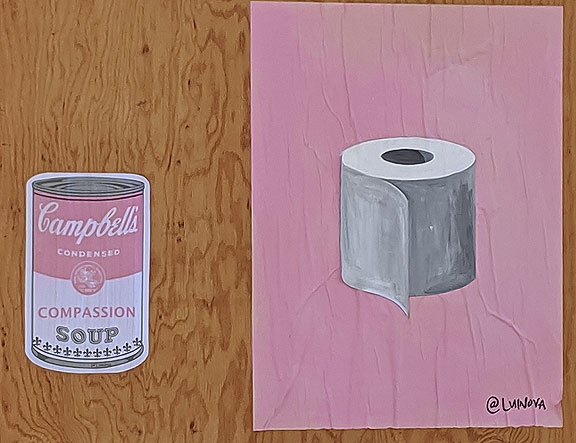
Public Health: Just How Public Is It?
Nothing bolsters the power of a state like a public health emergency. The whole notion of public health, taken to its logical conclusion, is at odds with bedrock principles of American economics and ruling class entitlement. In his Pulitzer Prize-winning The Social Transformation of American Medicine: The Rise of a Sovereign Profession & The Making of a Vast Industry (Basic Books, 2017) Paul Starr goes back a century to dredge up an early—and comprehensive—definition of public health. It shows that an expansive sense of public health directly challenges the prerogatives of power and wealth:
In 1920, Charles Edward Amory Winslow, professor of public health at Yale, defined public health as “the science and art of preventing disease, prolonging life, and promoting physical health and efficiency through organized community efforts for the sanitation of the environment, the control of community infections, the education of the individual in principles of personal hygiene, the organization of medical and nursing service for the early diagnosis and preventive treatment of disease, and the development of the social machinery which will ensure to every individual in the community a standard of living adequate for the maintenance of health.” So broad—and downright subversive—a conception, if taken seriously, is an invitation to conflict. Public health cannot make all these activities its own without, sooner or later, violating private beliefs or private property or the prerogatives of other institutions. Much of the record of public health is a record of struggles over the limits of its mandate. (p. 180)
It’s pretty clear that if you wanted to seriously address issues of public health, you’d have to go considerably beyond the narrow epidemiological facts of a given bacteria or virus and address the full range of influences on human (and ecological) well-being. Peter Linebaugh usefully distinguishes between microparasites such as viruses, and macroparasites such as corporations and ruling classes. “The macroparasite attacks by grinding its hosts into poverty, malnutrition, and destruction of pith and marrow. The immune system is defeated by over-work and extraction of increasing surplus-value.” (Lizard Talk, p. 24) Poverty has always been a breeding ground for chronic and severe disease. Notably, tuberculosis was one of the leading causes of early death from the 1860s until the antibiotic streptomycin was developed in the 1940s.
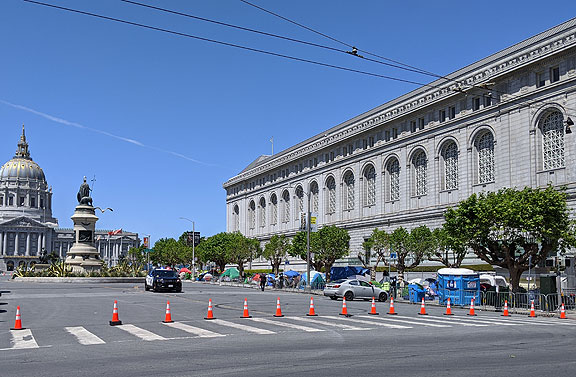
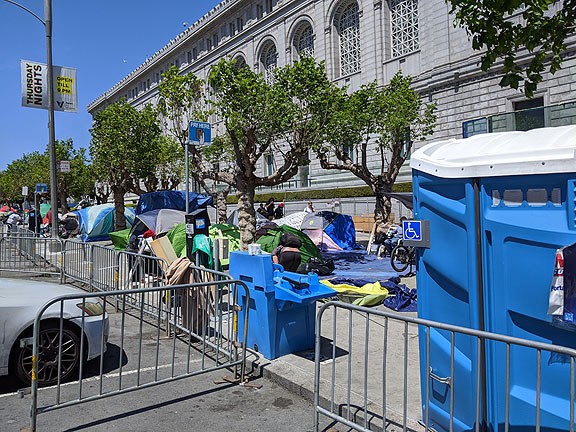
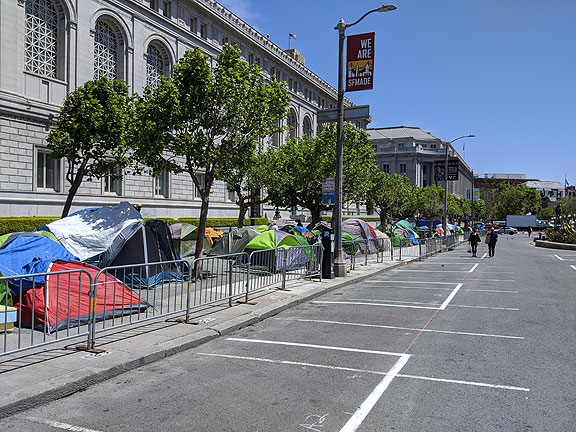
San Francisco’s city government during the late 19th and early 20th centuries refused to fund any serious program to address ongoing health crises, notably tuberculosis, refusing to assume responsibility for what was (and is still) deemed a personal responsibility. Eventually a series of wooden barracks was built behind the County Hospital (now General Hospital) around 1912 to separately house tuberculosis patients, but as late as the early 1930s the City only employed nine field nurses to handle over 10,000 annual home visits to tuberculosis sufferers in town, and only thirty general public health nurses. These low numbers of nurses made it difficult to identify all the people who were sick, which in turn reinforced the pecuniary approach of the City government. As Susan Craddock notes,
Housing, workplace conditions, length of workday, and wage levels were consciously left out of the fold of medical or public health authority even though they were known to play roles in tuberculosis rates. The 1930 recommendations of the committee surveying San Francisco’s public health program reflect what in effect have become institutionalized standards of public health policy: continued efforts at case tracing and reporting; more funds to extend nursing personnel; better methods of record-keeping for comparative statistical data; and the development of educational outreach to vulnerable populations.
The 1930s recommendations are almost exactly what is now being proposed to “get us back to work” from the Covid-19 pandemic. Business owners who comply with the pressure to reopen also do the government’s bidding in making it impossible to claim unemployment benefits when one’s former job is available to resume. But who wants to go back to a job with a lot of social contact when the virus is still rampant among us, and the likelihood of another cascading outbreak are quite high? Why is it so difficult for the society to just hit the ‘pause’ button for 3-4 months, give everyone a basic $2000/month for the duration, and resume after it’s “over?”
The question answers itself: legitimacy. How would a system that can so easily pause and keep everyone paid and fed justify returning to the madness of induced scarcities, coercive austerities, and the indefensible destruction of the planet that passed as “normal business life” until a few weeks ago? How will the waning interest in celebrities, in sports, in compulsive shopping, all be rekindled? What if the thrill is really gone? (Let’s hope!)
What if actually interesting and important questions moved to the foreground now? What if the newly unemployed refused to go back to the hospitality and tourism industries (which may not regain their former size for years, in any case), and instead insisted on doing some of the enormous work ahead of us as we adapt to the wrenching transformations demanded by climate change? What about a crash program to rebuild our cities:
• redesigning and expanding public transit systems,
• reorganizing and replumbing every dwelling to better use fresh water AND gray water,
• rapidly expanding urban agriculture IN PLACE OF the seas of asphalt covering so much land for the use and storage of private automobiles,
• providing free high-speed fiber optic connections to every person as a matter of right,
• opening wild corridors in urban areas and returning swaths of lands to nature so natural webs of life can regenerate themselves (as we have seen they will if humans will just step back).
There is so much to do and so little chance that any of it will happen under a capitalist economy, or under a state whose overriding concern is the preservation of private property and the profit system.
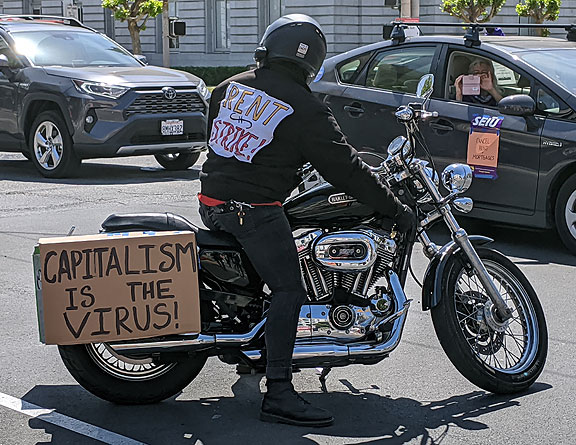
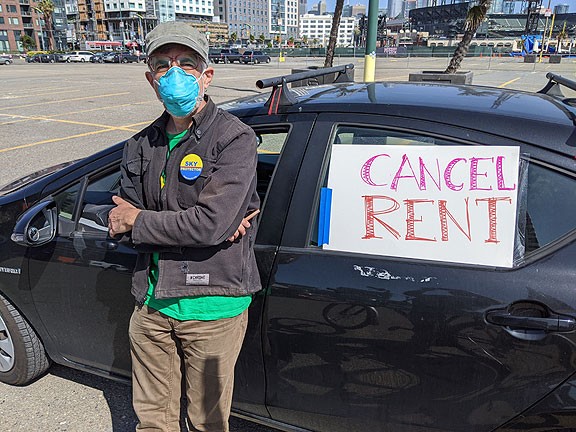
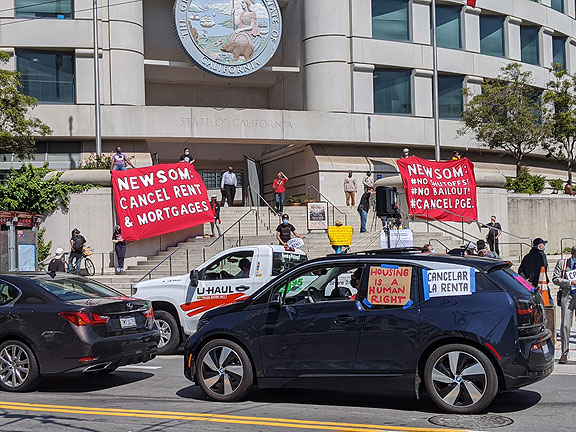
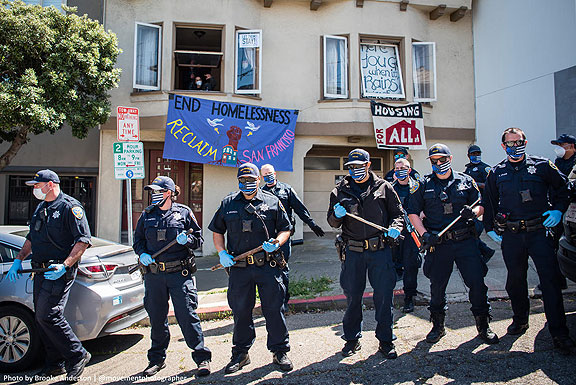
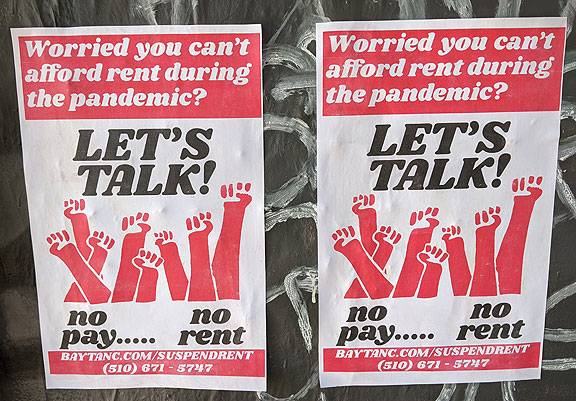
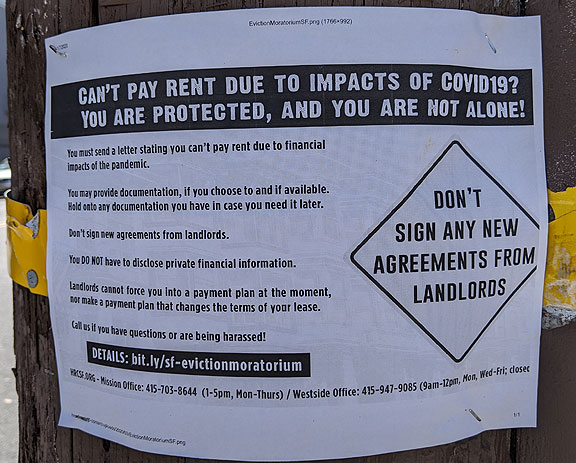
We Are Societies Made of Societies
As we frame the Covid-19 virus as a dangerous threat, it’s worth pondering the deeper assumptions about life and boundaries it has helped us to confront. As recent scholarship in theoretical biology argues, we are not really individuals, but whole societies of symbiotic and mutually constitutive species. Cruder politicians like to insist that they just follow their gut, and while that may be a dumb repudiation of intellect, the truth is that we all probably follow our gut in ways we can barely understand. How does our relationship with our digestive system affect our thinking on any given day? How about our relationships with the animals around us, the birds and bees? Why is this barely even mentioned as we come to grips with this pandemic, which is clearly as much an ecological crisis as a public-health one. Kate Brown, writing in The New Yorker April 13 edition, expands on this different way of imagining ourselves:
The interconnectedness of our biological lives, which has become even clearer in recent decades, is pushing us to reconsider our understanding of the natural world. It turns out that the familiar Linnaean taxonomy, with each species on its own distinct branch of the tree, is too unsubtle: lichens, for example, are made up of a fungus and an alga so tightly bound that the two species create a new organism that is difficult to classify. Biologists have begun questioning the idea that each tree is an “individual”—it might be more accurately understood as a node in a network of underworld exchanges between fungi, roots, bacteria, lichen, insects, and other plants. The network is so intricate that it’s difficult to say where one organism ends and the other begins. Our picture of the human body is shifting, too. It seems less like a self-contained vessel, defined by one’s genetic code and ruled by a brain, than like a microbial ecosystem that sweeps along in atmospheric currents, harvesting gases, bacteria, phages, fungal spores, and airborne toxins in its nets.
In the May 1 New Yorker one of my favorite science fiction writers, Kim Stanley Robinson, emphasized how the Coronavirus is rewriting our imaginations. Not only have we had a moment to pause and contemplate the nearly 8 billion of us living on the planet, but it’s become starkly obvious that our bizarrely complex existence is completely dependent on all sorts of scientific achievements, from agriculture to medicine. As Stan puts it, “we feel the reality, which is that the whole system is a technical improvisation that science keeps from crashing down.” He’s hopeful that we are (re)learning to trust science as a society. I’d say let’s wait and see! But obviously we’ll soon be confronted with another pandemic, or more dramatically, permanently altered patterns of weather and water due to climate change. It wasn’t so long ago when Cape Town in South Africa, Sao Paulo in Brazil, or Atlanta in the U.S., faced catastrophic collapses of water supplies. Each city dodged that bullet when rains appeared at the last minute and replenished nearly dry reservoirs, but as a global civilization (never more apparent than now under viral pressure) megacities are traipsing ever closer to catastrophic system failure. Science may help with urban redesign and technological improvisation, but not if we can’t find ways to engage with each other politically and psychologically, and find previously untapped reserves of empathy, compassion, and mutual assistance. Robinson again:
We are individuals first, yes, just as bees are, but we exist in a larger social body. Society is not only real; it’s fundamental. We can’t live without it. And now we’re beginning to understand that this “we” includes many other creatures and societies in our biosphere and even in ourselves. Even as an individual, you are a biome, an ecosystem, much like a forest or a swamp or a coral reef. Your skin holds inside it all kinds of unlikely coöperations, and to survive you depend on any number of interspecies operations going on within you all at once. We are societies made of societies; there are nothing but societies. This is shocking news—it demands a whole new world view. And now, when those of us who are sheltering in place venture out and see everyone in masks, sharing looks with strangers is a different thing. It’s eye to eye, this knowledge that, although we are practicing social distancing as we need to, we want to be social—we not only want to be social, we’ve got to be social, if we are to survive. It’s a new feeling, this alienation and solidarity at once. It’s the reality of the social; it’s seeing the tangible existence of a society of strangers, all of whom depend on one another to survive. It’s as if the reality of citizenship has smacked us in the face… If the project of civilization—including science, economics, politics, and all the rest of it—were to bring all eight billion of us into a long-term balance with Earth’s biosphere, we could do it.
It’s worth noting that the widespread shelter-in-place and quarantine orders have been pretty successful at instilling a culture of physical distancing. Regrettably it has reinforced and exacerbated social isolation too, an epidemic of loneliness that predates Covid-19, but has been made worse by the crisis. It will be urgent to build new social connections as part of the rebuilding of our lives after the pandemic recedes. Neighborly assistance efforts have proliferated, which may be the best building block for new organic webs of human connectivity.
Kate Brown in her article usefully connected the current pandemic with other ongoing health emergencies that we mostly have tucked away as unsolvable or normal.
Two-thirds of cancers have their origins in environmental toxins, accounting for millions of annual fatalities; each year, 4.2 million people die from complications of respiratory illnesses caused by airborne toxins—forty-five thousand in the U.S. alone. Marshall Burke, an assistant professor of earth systems at Stanford, has estimated that the reduction in pollution from the shutdown of factories in Wuhan has saved between fifty-one and seventy-three thousand lives in China–twenty times more people than the virus has killed in Hubei Province as of March 8th. “We have created a set of dangerous environments, and we can’t just keep imagining that we can exclude them or put them elsewhere,” Anna Tsing, an anthropologist at the University of California, Santa Cruz, told me. The big lesson of the virus, she said, is that “there is no place to run.” In an effort to expand our reach across the planet, we have cornered ourselves.
Having cornered ourselves, we are face to face with… a far more interconnected sense of who we are than we had even a few weeks ago. Donna Haraway has been thinking about our lives in a much more panoramic and long-term perspective than most of us ever imagine. In her book, Staying With the Trouble: Making Kin in the Chthulucene, she touches on many of themes that the pandemic has forced into our consciousness. Paralleling Mukherjee’s critical rejection of the neoliberal bean-counting “taut supply chain” logic I cited near the beginning of this post, Haraway blows up the individualist paradigm of modern biology by quoting colleagues who “argue that a zero-sum game based on computing methodological individualists is a caricature of the sensuous, juicy, chemical, biological, material-semiotic, and science-making world. Counting “articulate plants and other loquacious organisms” among their number, living critters love the floridly repetitive mathematics of the pushes and pulls of hyperbolic geometry not the accountant’s hell of a zero-sum game.” (p. 68)
This kind of expansive thinking seems to me more appropriate for this conjuncture, this crossroads at which we have found ourselves. There are countless paths ahead and all of them face knowable limits and constraints—but some of those limits are self-imposed and others are based on basic physics and biology. But what understanding do we bring to scientific facts, how do we conceive of ourselves in this universe of meaning-making?
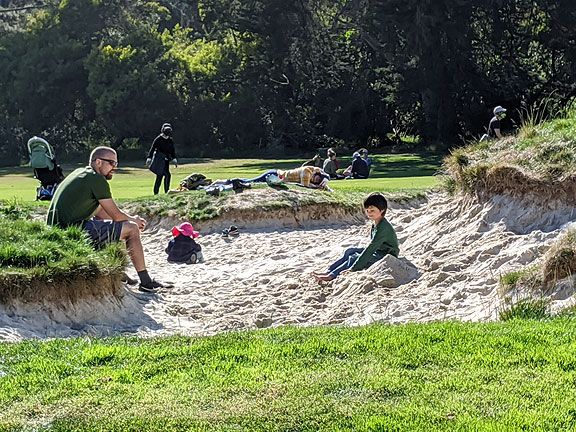
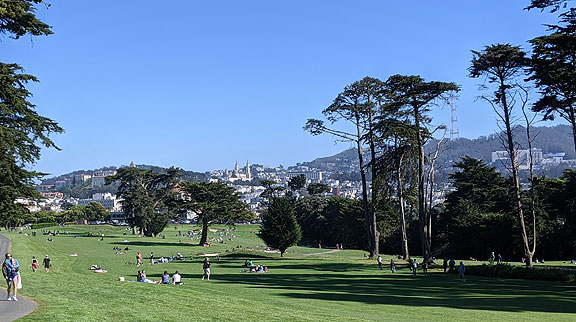
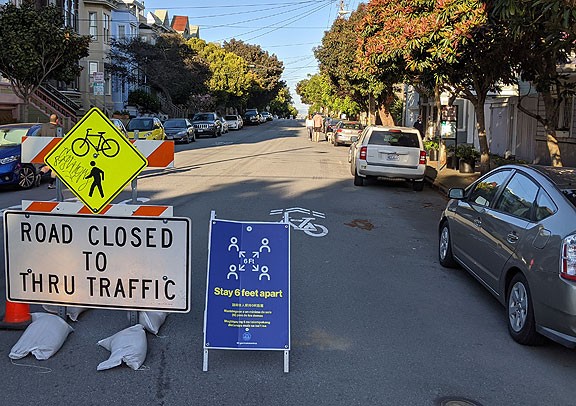
Recuperation Is Still Possible, Together
In Avian Reservoirs: Virus Hunters & Birdwatchers in Chinese Sentinel Posts Frédéric Keck, a French anthropologist who has spent years analyzing bird flu among the scientists and ornithologists and lab workers of Singapore, Hong Kong, and Taiwan, argues that paradigms that date to the origins of western museums shape how we “know” about these new viruses. Moreover, the different ways of using scientific evidence are indicative of deeper differences, perhaps related to a move from one historic epoch to the next?
Parallel to the massive amount of vaccines and antivirals stockpiled by health authorities, then, there is a massive amount of viral information stored in microbiology labs. While stockpiling is ruled by sovereignty, property, and exchange, storage is regulated by trust, transparency, and robustness of the information… The difference in temperature between stockpiling and storage may amount to historical ruptures between modes of production. (p. 148) …the idea of the livestock revolution as an animal reservoir for virus mutations combines two visions of living beings: standardized commodities that increasingly circulate around the globe and living beings who can revenge against humans by sending the “lethal gift” of pathogens. (p. 159)
He spends a lot of time with ornithologists and finds that their approach to cataloguing and watching birds is quite analogous to the lab-based virus hunters who are so determined to capture and store ever more samples of tissue and blood with intact viruses. At some level Keck is able to adopt the point of view of the birds:
A bird flu pandemic is one of the “myths” that tell us most eloquently about our current relations with the environment in a world where poultry is increasingly raised for human consumption at high zoonotic risks and where wild birds are threatened with extinction by the destruction of their habitat. A bird flu pandemic is thus the reversal, as in a mirror, of a bird species extinction: an imaginary revenge of the birds against the way humans treat them.
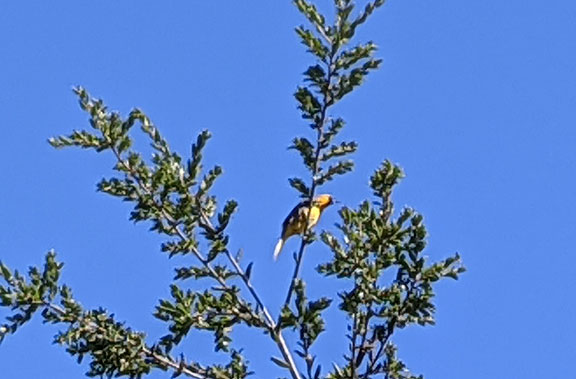
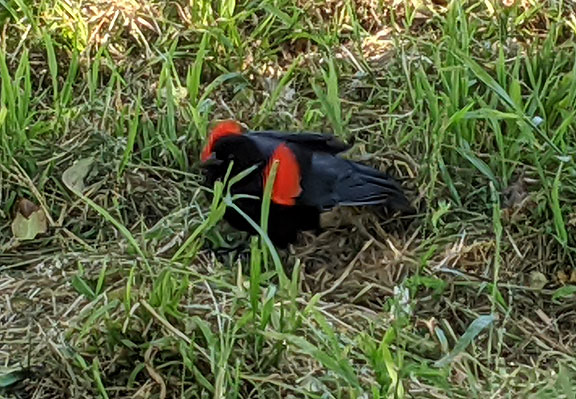
But birds are certainly not the only forms of life that are under duress. In fact, given the fragility of the global human population and its vulnerability to systemic breakdown, both technological and climatic, we are among the threatened. Haraway knows this when she argues
… The Anthropocene marks severe discontinuities; what comes after will not be like what came before. I think our job is to make the Anthropocene as short/thin as possible and to cultivate with each other in every way imaginable epochs to come that can replenish refuge.
Right now, the earth is full of refugees, human and not, without refuge.
Recuperation is still possible, but only in multispecies alliance, across the killing divisions of nature, culture, and technology and of organism, language, and machine. The feminist cyborg taught me that; the humanimal worlds of dogs, chickens, turtles, and wolves taught me that; and in fugal, fungal, microbial, symbiogenetic counterpoint, the acacia trees of Africa, the Americas, Australia, and the Pacific Islands, with their congeries of associates reaching across taxa, teach me that. Sowing worlds is about opening up the story of companion species to more of its relentless diversity and urgent trouble.
Finally, it still comes down to what we decide to do together. As individuals we cannot alter the terms of our lives much, but as the Covid-19 shutdown has shown, our collective activity is a source of great power. Accidentally we’ve received a great demonstration of the power of a General Strike, this one imposed by a novel coronavirus. What if, when this is finally past us, our imaginations have been permanently altered, and we can no longer unthink the alluring possibility of breaking with the way things were and starting something much much better? The coronavirus demanded fast action and we showed we can do it, even when the authorities dither, deny, and deflect. Imagine if we used our collective power to finally reorganize a rotting society, to do the long-neglected pruning and gardening to bring forth the healthy and beautiful possibilities that are currently being smothered by poisons and bad intentions?
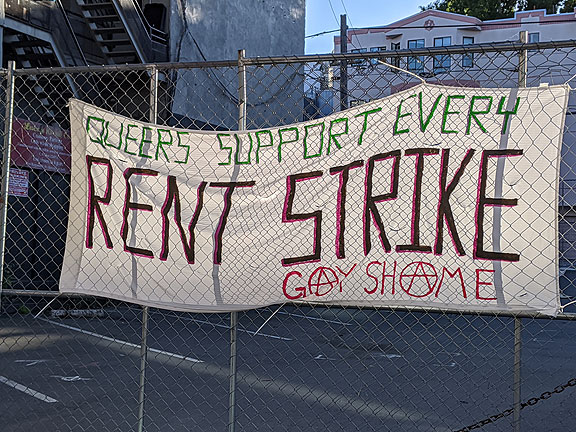
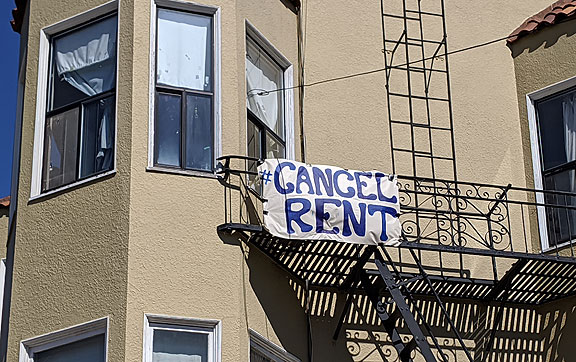
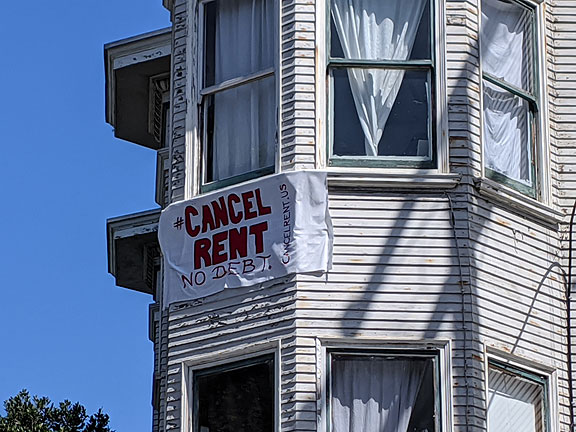
https://nowtopians.com/wp-content/uploads/2020/05/banner-wave-2020-05-01-135625-1.mp4












Leave a Reply